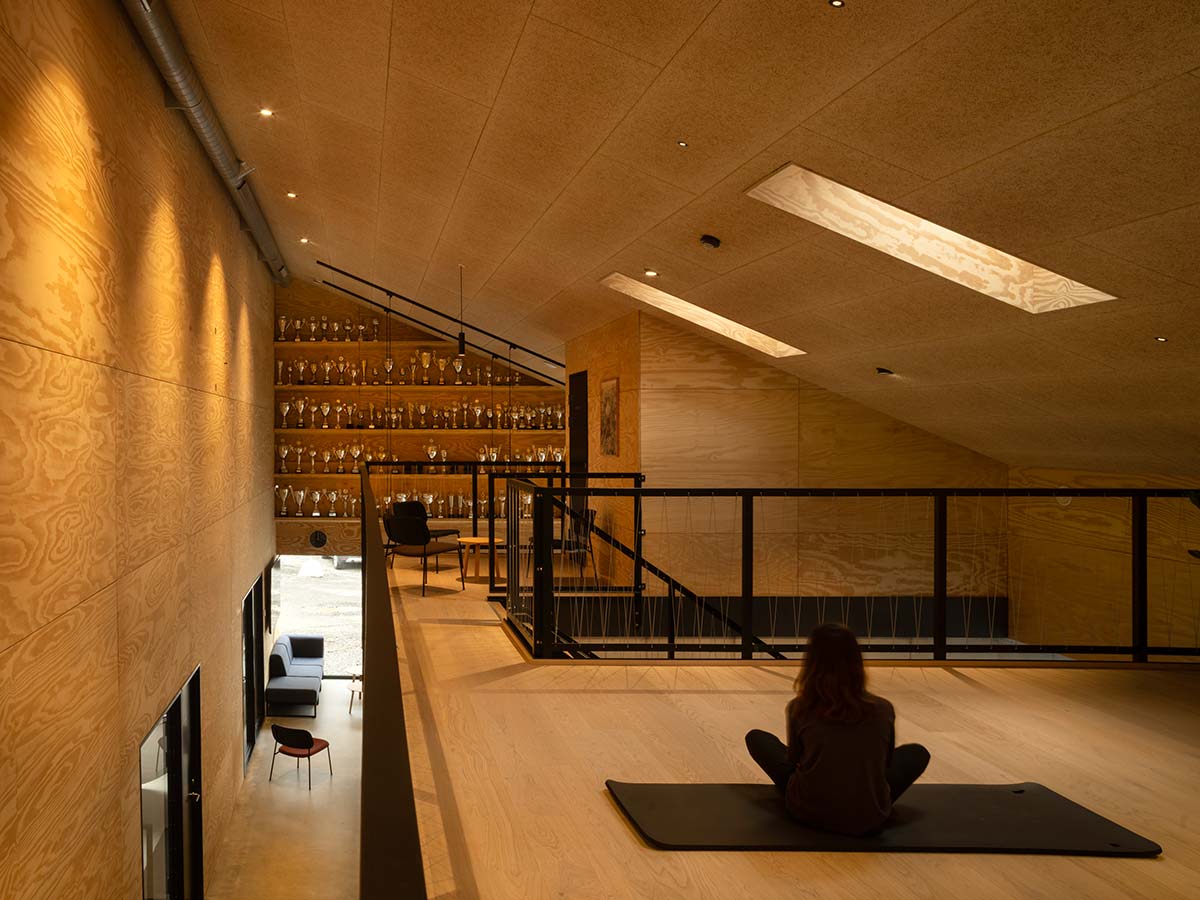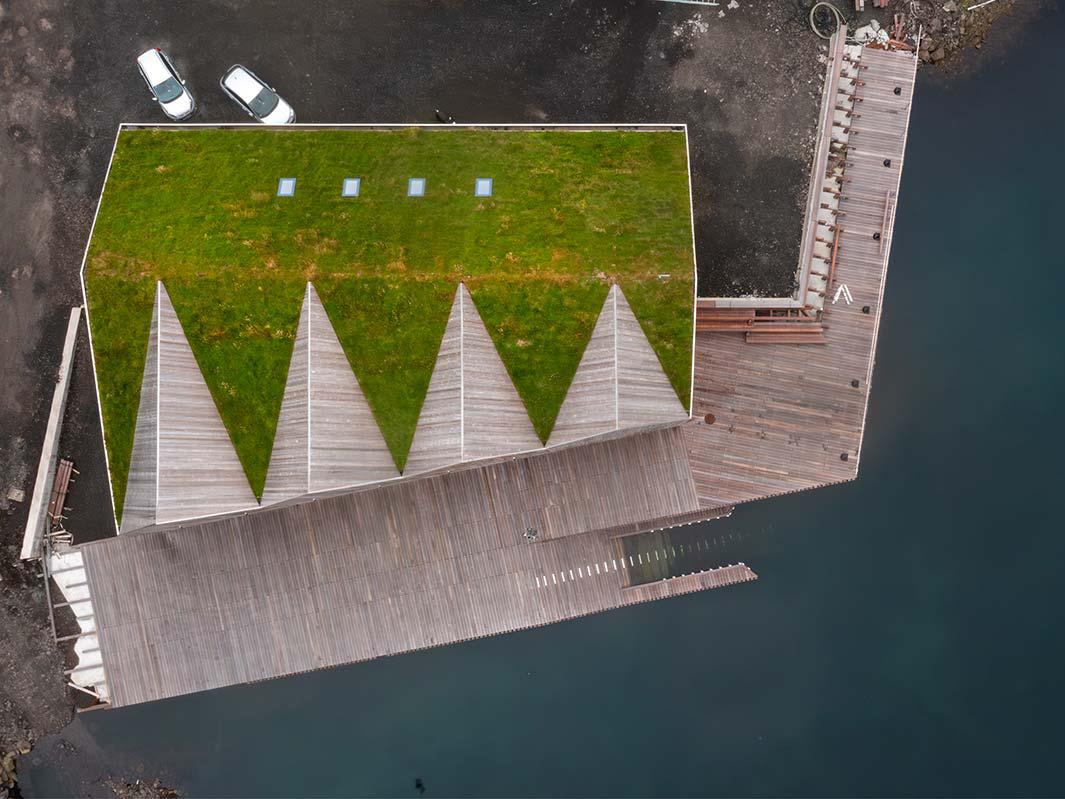DATA SHEET
Client: Klaksvíkar Kommuna
Architecture and Landscape design: Henning Larsen
Photo credits: Nic Lehoux
Henning Larsen designed the masterplan, which is 40-60% complete. Slated for completion within 2025, additional renewal plans intend to meet the local population’s priorities. In the midst of an identity shift, Klaksvík is the second largest city of the Fær Øer islands, the volcanic archipelago between Iceland and Norway in the North Atlantic Ocean.

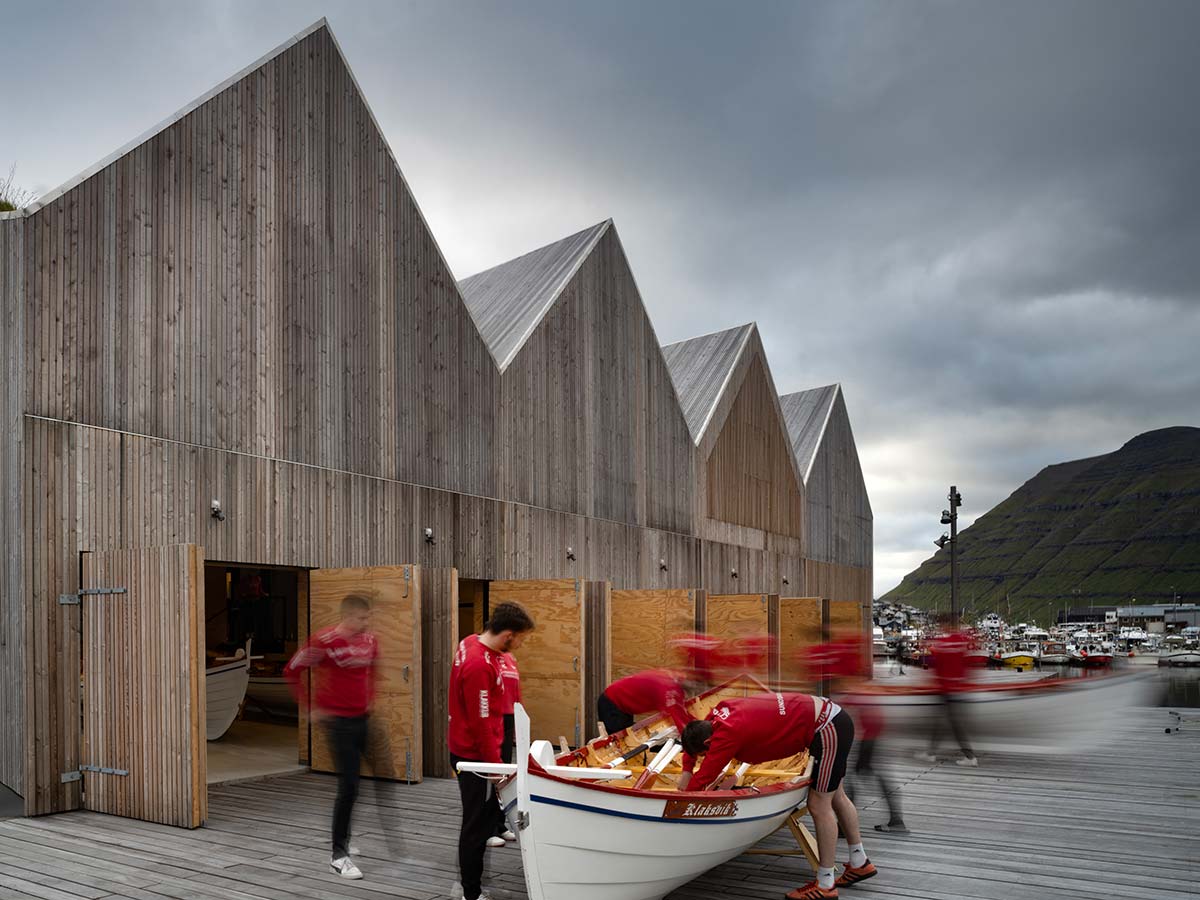
In a landscape that is a succession of mountains, valleys, grassy lands, and steep cliffs, the new Klaksvík Row Club is in a fjord that shelters it from strong winds, affording views of nearby islands. The Club is set to be a vital center for the town’s population of 5,000. The building was a former post office turned into a cultural center, which the architects perfectly set in the urban layout to be dynamic and bolster the space’s community use.
The clubhouse is a tribute to the national sport of rowing, a major part of Faroese life and culture. Athletes spend much time training year-round and racing against neighboring cities. Here there is also an age-old craft tradition of making wooden boats. Now UNESCO heritage, their origins date to the Vikings who made them with a single ax. The 620-square-meter structure has a green sloping roof and a wooden façade, reflecting the natural beauty around it in a harmonious dialogue between the built environment and the landscape, with a nod to traditional architecture.
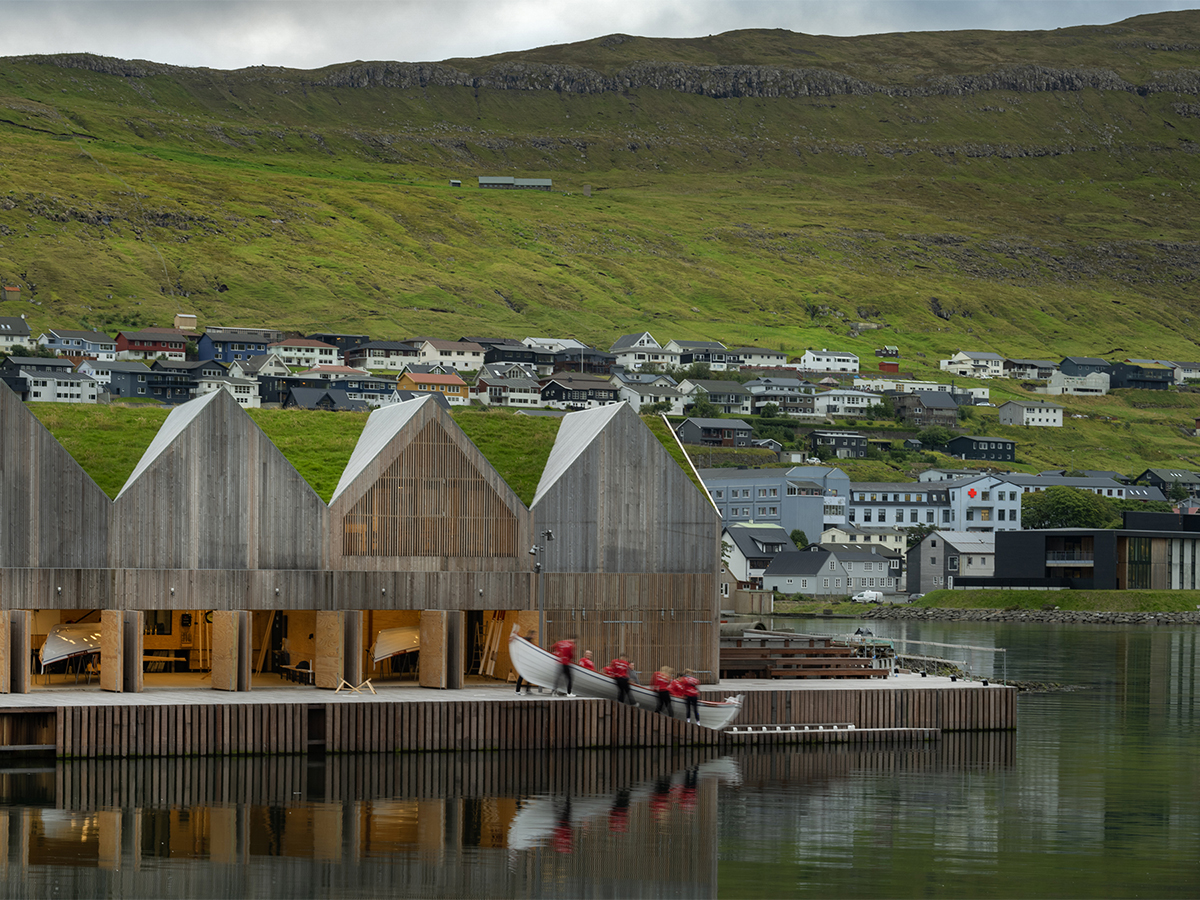
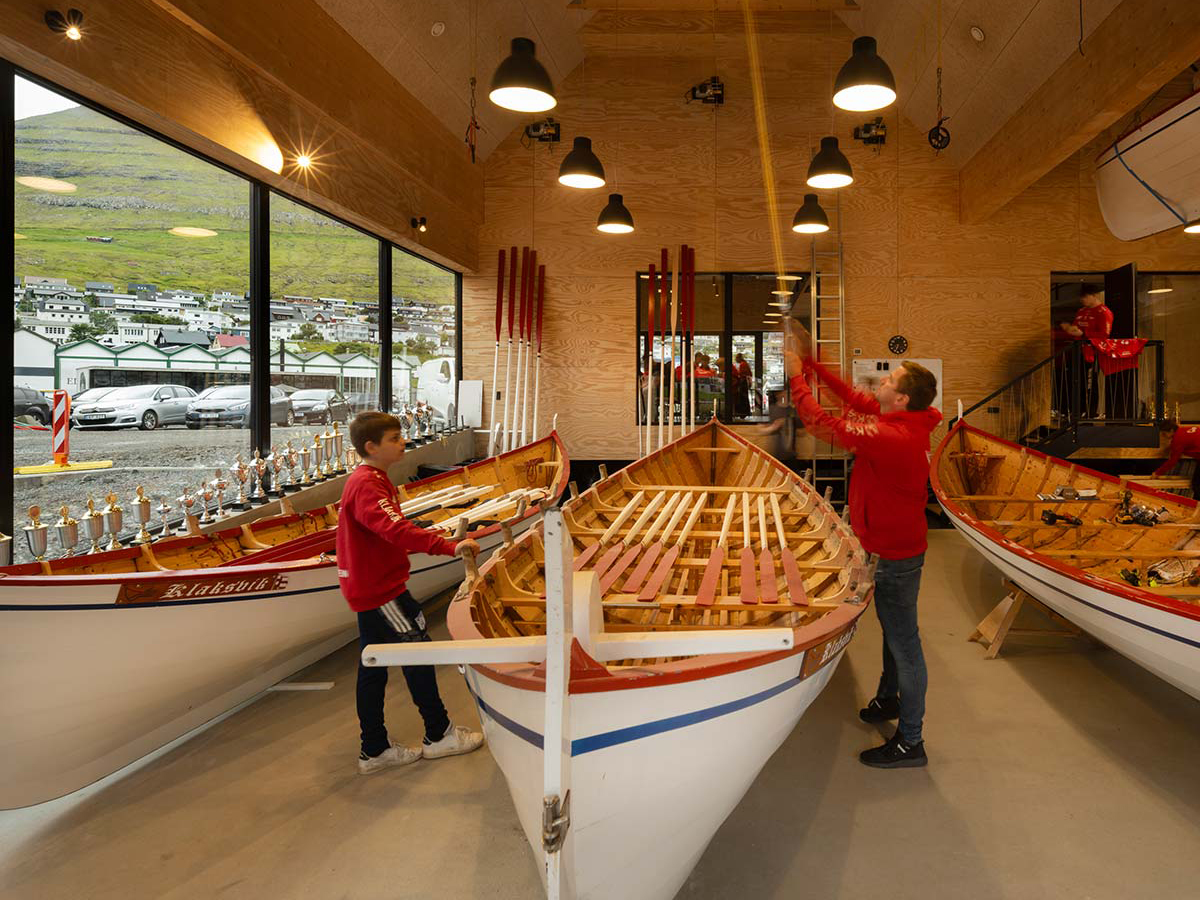
The exterior has areas for preparing boats to launch and large doors that open from the storage area to the pier and then the water, facilitating movement between inside and outside. “We wanted to create a space that is more than simple boat storage. The expansive doors opening onto the wooden dock and the open timber interior were designed to enhance the community use of the space,” says Ósbjørn Jacobsen, Design Director.
The use of wood dominates onside combined with the large windows that afford scenic views and abundant natural light. The clubhouse also serves as a public place. There are large spaces for training sessions as well as cozy areas for coffee breaks and relaxation, as well as to host a variety of exhibitions and other events. The club highlights the history and thrill of the traditional crafting of boats.
